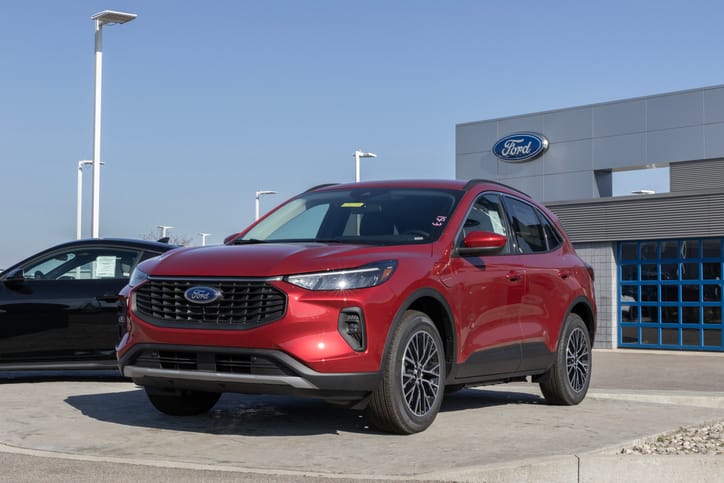Hybrid vs. Plug-in Hybrid SUVs: Toyota RAV4 Hybrid vs. Ford Escape PHEV

The world of fuel-efficient SUVs is growing rapidly, with hybrid and plug-in hybrid options offering attractive alternatives to traditional gasoline-powered models. When it comes to choosing between these two technologies, understanding the key differences is crucial. This article delves into the world of hybrid vs. plug-in hybrid SUVs, using the popular Toyota RAV4 Hybrid and the Ford Escape Plug-in Hybrid (PHEV) as a comparison point.
Hybrid vs. Plug-in Hybrid: Core Differences
Hybrid Electric Vehicles (HEVs) combine an electric motor with a gasoline engine. The electric motor assists the gasoline engine, particularly during city driving and acceleration, resulting in improved fuel efficiency. However, HEVs cannot be plugged in to recharge their batteries. The battery pack in an HEV is charged by the gasoline engine and regenerative braking, which captures energy during deceleration.
Plug-in Hybrid Electric Vehicles (PHEVs) operate similarly to HEVs, but with a larger battery pack that can be plugged into an external power source. This allows PHEVs to travel a certain distance solely on electric power, offering significant fuel savings for short commutes. Once the battery depletes, the PHEV functions like a regular HEV, with the gasoline engine taking over.
Fuel Efficiency and Electric Range
One of the biggest advantages of both HEVs and PHEVs is their fuel efficiency compared to traditional gasoline SUVs. The Toyota RAV4 Hybrid boasts an impressive combined fuel economy of 41 mpg (miles per gallon), while the Ford Escape PHEV offers an EPA-estimated 42 miles of electric range and a combined fuel economy of 82 MPGe (miles per gallon equivalent) when factoring in electric driving.
However, the key difference lies in how this efficiency is achieved. The RAV4 Hybrid relies primarily on its gasoline engine for propulsion, with the electric motor acting as a supporting act. In contrast, the Escape PHEV prioritizes electric driving for shorter commutes, maximizing fuel savings if you can consistently recharge the battery.
Power and Performance
When it comes to power and acceleration, the RAV4 Hybrid holds a slight edge. Its combined powertrain output delivers a more responsive driving experience compared to the Escape PHEV. This might be a deciding factor for drivers who prioritize a sportier feel.
All-Wheel Drive Options
Both the RAV4 Hybrid and Escape PHEV offer all-wheel drive (AWD) options. However, the RAV4 Hybrid provides AWD on most trim levels, while AWD is not available on the Escape PHEV. This could be a significant factor for drivers in regions with frequent snowfall or challenging terrain.
Cargo Space and Interior Features
The RAV4 Hybrid offers slightly more cargo space than the Escape PHEV due to the placement of the battery pack in the Escape. However, both SUVs provide ample cargo room for luggage and everyday essentials.
In terms of interior features, both vehicles offer a comfortable and well-equipped cabin. The RAV4 features Toyota's proven infotainment system, known for its user-friendliness. The Escape PHEV boasts a more modern and stylish interior design, with a focus on technology integration.

Reliability and Maintenance
Toyota has a well-deserved reputation for building reliable and long-lasting vehicles. The RAV4 Hybrid is expected to require minimal maintenance throughout its ownership period. While the Escape PHEV is a newer entrant in the PHEV segment, Ford has a history of reliable hybrid offerings. However, the added complexity of a PHEV powertrain might translate into slightly higher maintenance costs in the long run.
Cost and Value Proposition
The RAV4 Hybrid starts at a lower price point than the Escape PHEV. However, the Escape PHEV qualifies for federal tax credits, potentially reducing the overall purchase cost. Additionally, significant fuel savings can be achieved with the Escape PHEV if you have access to regular charging and primarily use the car for short commutes.
Who Should Choose Which?
The choice between the RAV4 Hybrid and Escape PHEV boils down to your driving habits and priorities. Here's a breakdown:
- Choose the RAV4 Hybrid if:
- You prioritize a lower starting price.
- You value a more powerful and responsive driving experience.
- You need AWD capability (most trims).
- You prefer a well-established and reliable hybrid powertrain.
- Choose the Escape PHEV if:
- You prioritize maximizing fuel efficiency on short commutes with access to regular charging.
- You qualify for federal tax credits.
- You prefer a more modern and stylish interior design.
Conclusion
Both the Toyota RAV4 Hybrid and the Ford Escape PHEV are excellent choices for eco-conscious SUV drivers. The RAV4 Hybrid offers a proven and reliable hybrid powertrain with good fuel economy and a lower starting price. The Escape PHEV prioritizes electric driving for short commutes, potentially resulting in significant fuel savings. However, its lack of AWD and potentially higher maintenance costs down the line should be considered.
